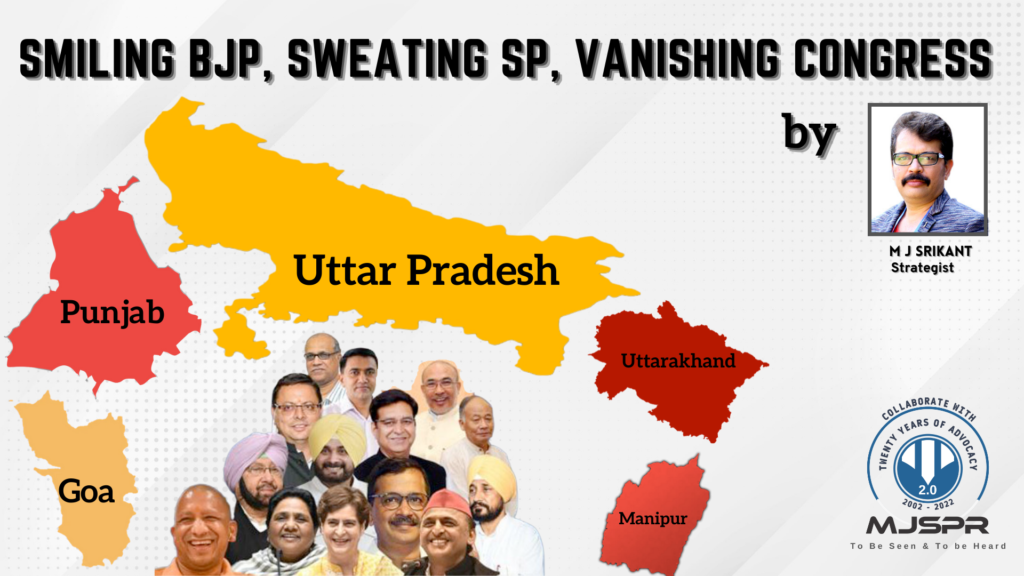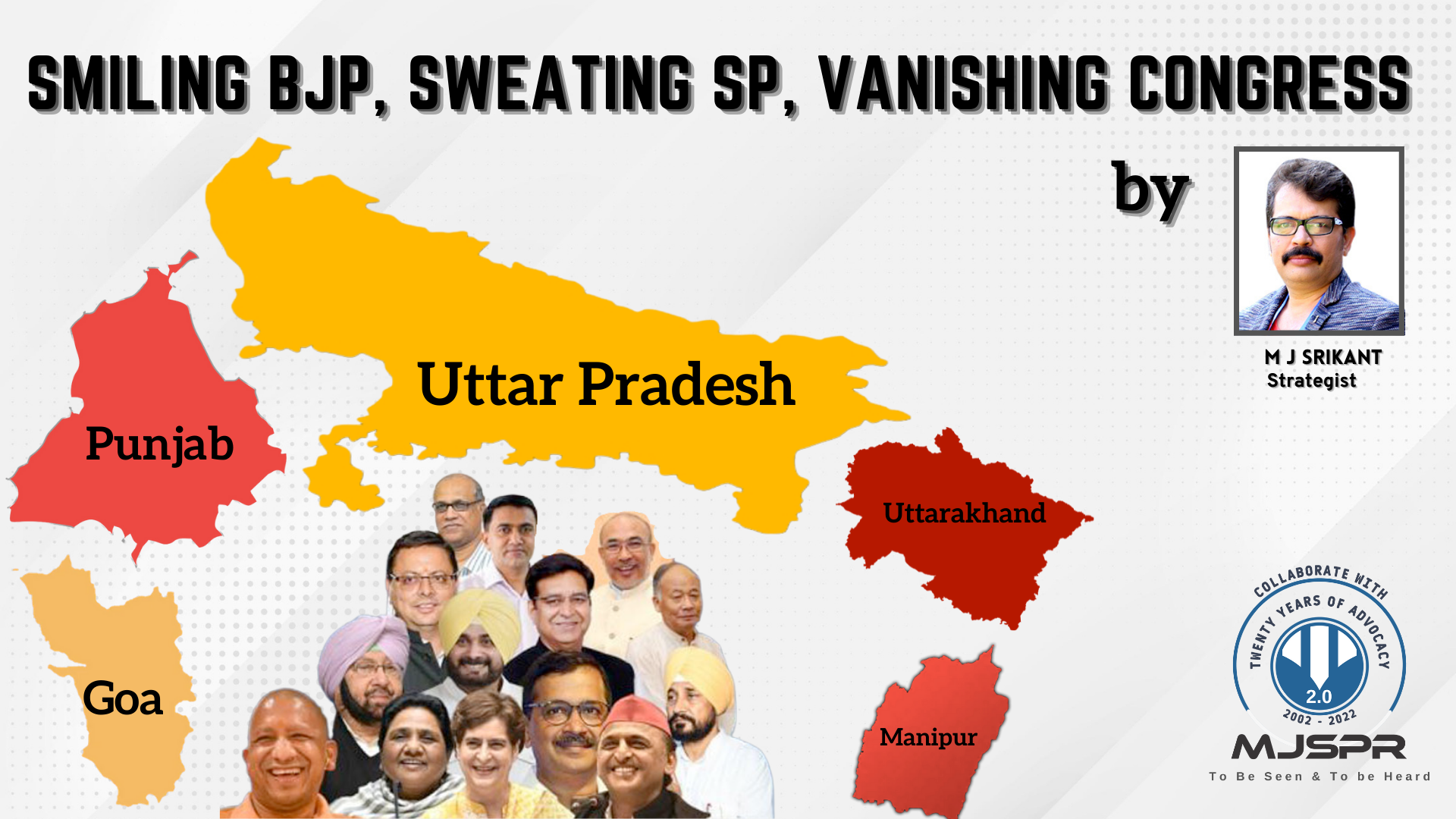5 state assembly elections 2022
Anti-incumbency is one of the stock phrases often used when a functioning democratic country goes to elections. But it is an easy way of simplifying the governance and sentiments of the people. Many factors work in caste-based political parties to determine the winners and losers.
On March 10, the results of five states that went for assembly elections are expected to set a trend for the 2024 Lok Sabha elections as well as the states that will face elections in 2023. Karnataka is one such state.
In five states that went to polls – Goa, Manipur, Uttarakhand, Punjab, and Uttar Pradesh – the BJP is ruling in four states, except in Punjab. While analysing the probable results, the Congress is shown the exit door in Punjab, making way for the AAP, while the picture is hazy in Goa. But in other states, the BJP may retain power, as per the exit polls of various agencies. If the anti-incumbency factor has worked against the Congress in Punjab, then is it pro-incumbency in the case of other states?

For example, in Uttar Pradesh, all the exit polls’ outcomes are going in favour of the Yogi Adityanath government. A vast state like UP is facing the polls soon after recovering from the two-year pandemic. Some of the welfare schemes, especially during the COVID-19 infused pandemic, might have worked for him. People might find him more “UpYogi” than his rivals.
The Samajavadi Party’s Akhilesh Yadav tried to polarise votes on a caste and religion basis. But he might have tried better next time because the BJP’s exercise of consolidating Hindu votes is still working. Akhilesh’s efforts to consolidate Muslim votes, where the minority religion makes up about 19% of the total UP population, may not pay dividends. Besides, Muslims, in particular women, have no particular reason to resist the BJP, thanks to Narendra Modi.
For the common man, the development of the Varanasi corridor, the designation of Illahabad-Allahabad as Prayagraj, the control of the underworld mafia, the promotion of Uttar Pradesh to second place in terms of economic power from sixth place in the country, and the freebies distributed during the COVID crisis period speak volumes.The Congress, BSP, and TMC have turned into dwarfs.
Among the other four states, it is only in Goa where the Congress, going solo, has put up a spirited fight. In Uttarakhand, the six-party alliance led by the Congress has tried to widen the gap between the BJP and the Hills and Valley.
Karnataka’s Impact
If the five states’ poll results are going to set the tune for the next assembly elections, how will the BJP government in Karnataka perform? There are not many selling or positive talking points for the BJP government here.
The BJP government is dithering about going ahead with the much delayed BBMP elections despite ploughing not less than Rs 200 crore into each assembly constituency that has a BJP MLA. Political instability in the ruling party has made the state see two chief ministers. Not a single big-ticket project has come to the state in the last five years. Except for creating a dashboard on Covid, there isn’t much to appreciate regarding pandemic management.
Just eight months until the elections. Maybe the BJP would again bank on Lingayat strongman B.S. Yediyurappa to consolidate community votes.
For the BJP’s fortune, the Congress is also a divided house here. Two highly ambitious leaders, Siddaramaiah and DK Shivakumar, have been eyeing the CM gaddi. But who would be investing money in electioneering between the two?Morons in Congress may not position anyone as the chief ministerial candidate, and that may cost heavily for the party.
In the case of the JD (S), it is finding it tough to get an identity even in the Vokkaliga belt.
With all these ground realities, Karnataka may again see a khichdi (coalition) party in power, which will do no good to the state. However, in the next eight months, the BJP can, to a certain extent, boost its image provided the Delhi leaders give a helping hand.






